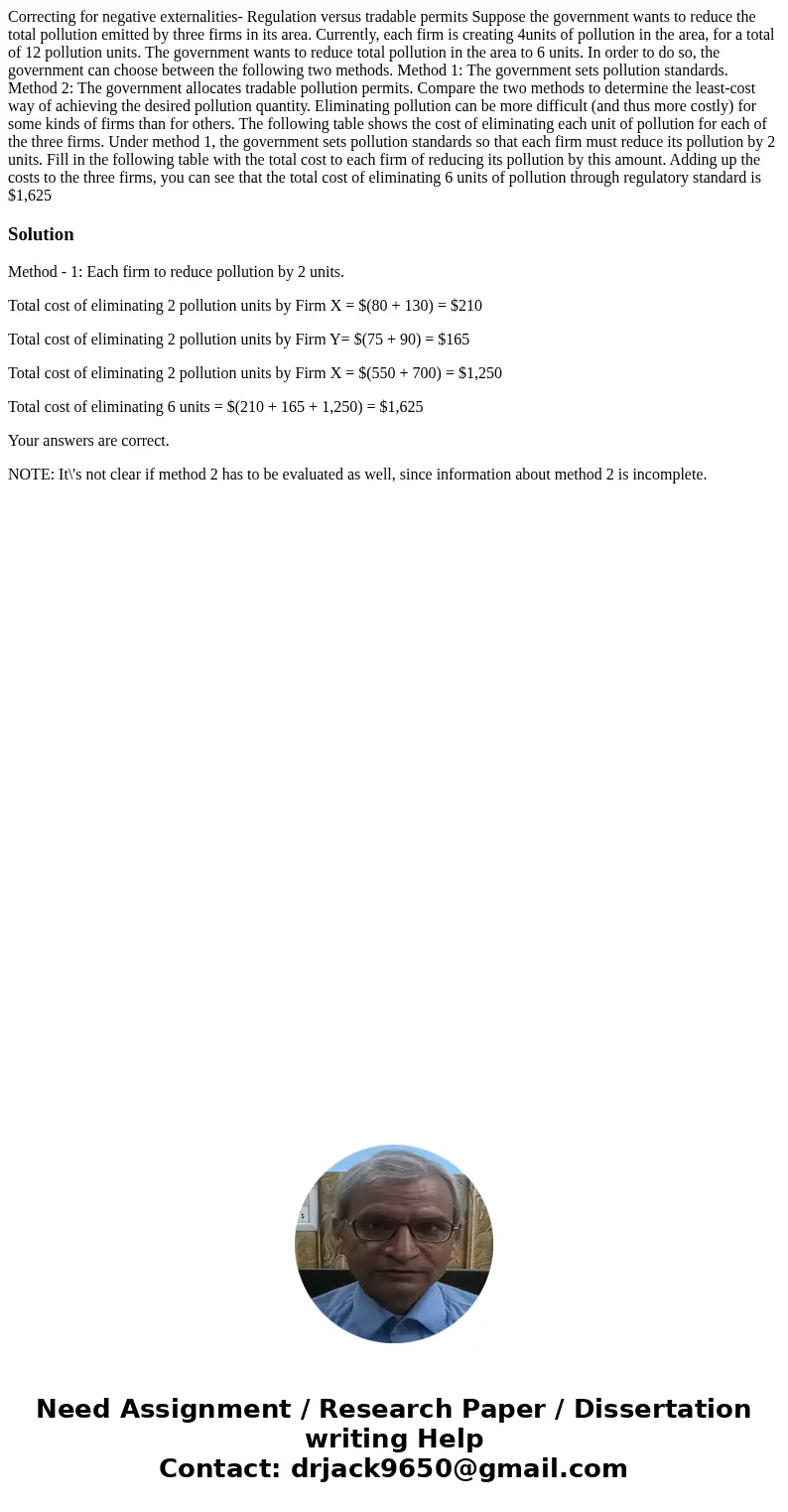Correcting for negative externalities Regulation versus trad
Correcting for negative externalities- Regulation versus tradable permits Suppose the government wants to reduce the total pollution emitted by three firms in its area. Currently, each firm is creating 4units of pollution in the area, for a total of 12 pollution units. The government wants to reduce total pollution in the area to 6 units. In order to do so, the government can choose between the following two methods. Method 1: The government sets pollution standards. Method 2: The government allocates tradable pollution permits. Compare the two methods to determine the least-cost way of achieving the desired pollution quantity. Eliminating pollution can be more difficult (and thus more costly) for some kinds of firms than for others. The following table shows the cost of eliminating each unit of pollution for each of the three firms. Under method 1, the government sets pollution standards so that each firm must reduce its pollution by 2 units. Fill in the following table with the total cost to each firm of reducing its pollution by this amount. Adding up the costs to the three firms, you can see that the total cost of eliminating 6 units of pollution through regulatory standard is $1,625
Solution
Method - 1: Each firm to reduce pollution by 2 units.
Total cost of eliminating 2 pollution units by Firm X = $(80 + 130) = $210
Total cost of eliminating 2 pollution units by Firm Y= $(75 + 90) = $165
Total cost of eliminating 2 pollution units by Firm X = $(550 + 700) = $1,250
Total cost of eliminating 6 units = $(210 + 165 + 1,250) = $1,625
Your answers are correct.
NOTE: It\'s not clear if method 2 has to be evaluated as well, since information about method 2 is incomplete.

 Homework Sourse
Homework Sourse